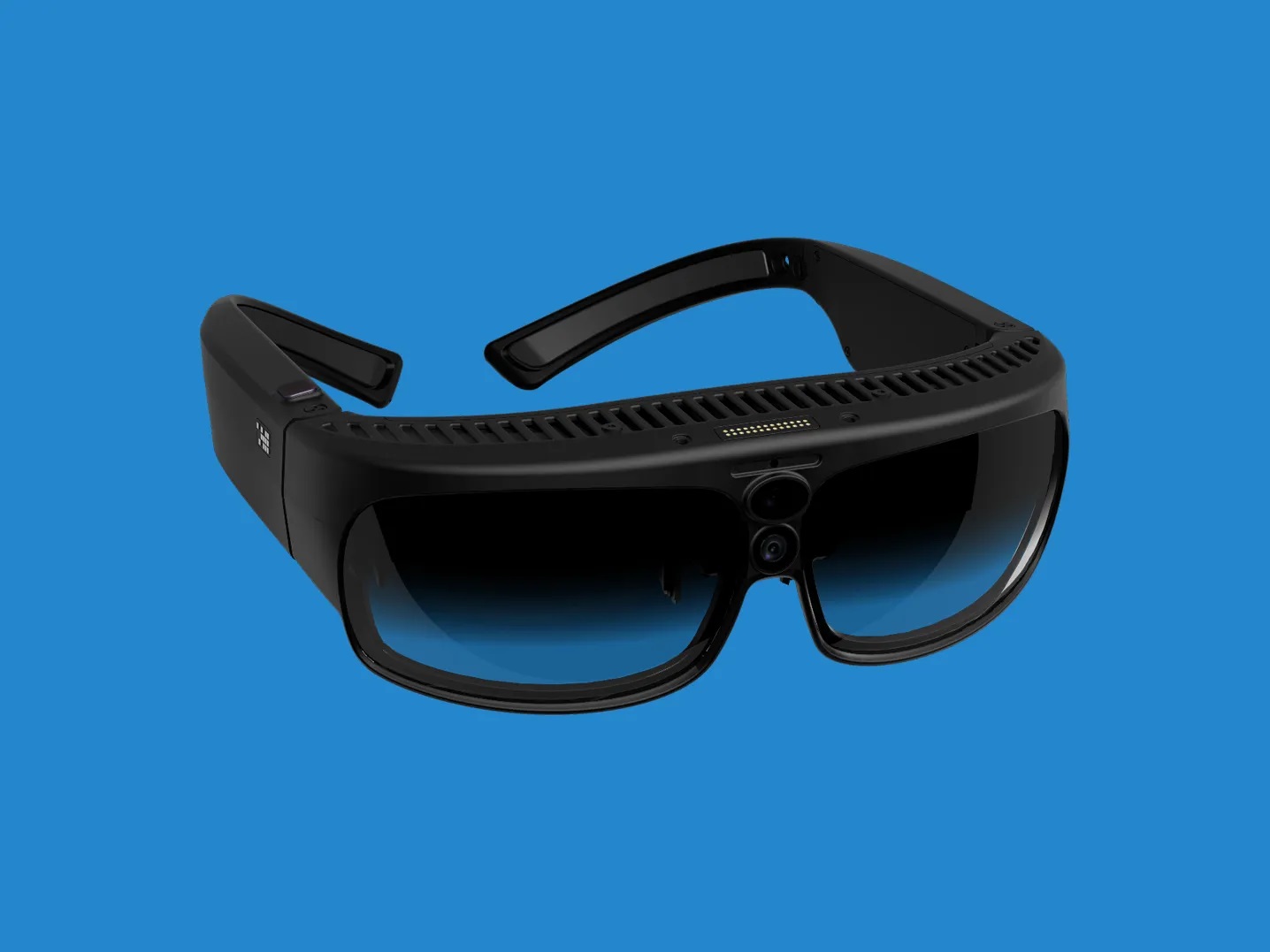Home>Latest News>Technology Trends>What Are AR Glasses


Technology Trends
What Are AR Glasses
Modified: September 5, 2024
Stay ahead of the curve with the latest technology trends. Discover the potential of AR glasses and their impact on the future of tech.
(Many of the links in this article redirect to a specific reviewed product. Your purchase of these products through affiliate links helps to generate commission for Techsplurge.com, at no extra cost. Learn more)
Table of Contents
What Are AR Glasses?
Augmented Reality (AR) glasses are wearable devices that blend the real world with digital information. They enhance user experiences by overlaying virtual objects, text, and other data onto the real environment. These glasses utilize advanced technologies such as artificial intelligence (AI), machine learning, and computer vision to seamlessly integrate digital and physical elements.
History of AR Glasses
The concept of AR glasses dates back several decades, with early prototypes emerging in the 1960s. Practical AR systems were developed in the 1990s, though they were often cumbersome and limited. These early systems laid the groundwork for today's sophisticated AR glasses.
Recent advancements have made AR glasses more accessible and user-friendly. Companies like Microsoft, Google, and Brilliant Labs have been at the forefront, integrating these devices with applications such as language translation, image recognition, and internet search.
How AR Glasses Work
AR glasses typically consist of:
- Display System: Can be see-through or opaque. See-through displays use micro-LED or micro-OLED technology to project images directly onto the user's field of vision without obstructing their view. Opaque displays use screens and mirrors to create a virtual environment.
- Sensors: Include cameras, accelerometers, and gyroscopes. These sensors track the user's movements and surroundings, allowing accurate overlay of digital information onto the real world.
- Processing Unit: Often powered by a powerful CPU and GPU, this unit runs software that interprets data from the sensors and generates the augmented reality experience.
Applications of AR Glasses
AR glasses have a wide range of applications across various industries:
Language Translation
AR glasses can translate languages in real-time. For instance, Brilliant Labs' Frame AI glasses translate phrases as the user sees them, easing communication across language barriers. This feature is particularly useful for travelers and business professionals.
Image Recognition
These devices can recognize images and provide additional information. For example, if a user sees a product on a shelf, the glasses can display details such as price, reviews, and purchase locations. This feature is useful for shopping and navigation.
Internet Search
Users can search the internet directly through their AR glasses. This feature allows quick information retrieval without needing a separate screen. For example, if a user sees an interesting building, they can search for information about it instantly.
Healthcare
In healthcare, AR glasses can be used for patient education, surgical guidance, and medical training. Surgeons can visualize anatomical structures during operations, enhancing precision and reducing risks.
Education
AR glasses offer a new dimension to education by making learning more interactive and engaging. Students can visualize complex concepts in science, history, and other subjects, making it easier to understand and retain information.
Retail
Retailers use AR glasses to enhance the shopping experience. Customers can try on virtual clothes or see how furniture would look in their homes before making a purchase, reducing returns and increasing satisfaction.
Manufacturing
In manufacturing, AR glasses can be used for assembly instructions, quality control, and maintenance tasks. Workers receive step-by-step instructions on assembling complex machinery or identifying defects in real-time.
Customization and Open-Source Development
One unique aspect of AR glasses is their customizability. Tech-savvy users can modify the software and hardware to suit specific needs. Brilliant Labs' Frame AI glasses are open-source, allowing developers to experiment with the code and add new functionalities.
This open-source approach makes the technology more accessible and fosters a community of developers contributing to the advancement of AR glasses. Users can also customize frames to fit prescription needs, making the technology inclusive for everyone.
Challenges and Limitations
Despite advancements, several challenges and limitations need addressing:
Cost
AR glasses remain relatively expensive, making them inaccessible to many consumers. The high cost is due to advanced technology, including high-resolution displays and sophisticated sensors.
Battery Life
A major limitation is battery life. Users need to recharge frequently, which can be inconvenient, especially when continuous use is required.
Privacy Concerns
Privacy concerns arise when using AR glasses. The devices often require access to location and other personal data, raising ethical questions about data privacy.
User Experience
While AR glasses offer potential, the user experience can sometimes be clunky. The devices require calibration and sometimes struggle to provide seamless integration of digital and physical elements.
Future Developments
The future of AR glasses looks promising with several advancements on the horizon:
Improved Display Technology
Advancements in display technology will continue to improve the quality and resolution of AR glasses. Micro-LED and micro-OLED displays are already in use, and future developments may include even more advanced technologies like holographic displays.
Enhanced AI Capabilities
AI and machine learning will play a crucial role in the development of AR glasses. Improved AI capabilities will enable the devices to recognize objects more accurately and provide more relevant information in real-time.
Integration with Other Devices
AR glasses will likely integrate with other devices such as smartphones and smartwatches, creating a seamless ecosystem for users. This integration will enhance functionality and make them more versatile.
Wider Adoption
As technology improves and costs decrease, wider adoption of AR glasses across various industries is expected. From healthcare to education, AR glasses will become essential tools for enhancing productivity and improving user experiences.
Augmented Reality glasses represent a significant leap forward in wearable technology, offering users a new way to interact with the world around them. With their ability to translate languages, recognize images, and search the internet, these devices have the potential to change how we live and work. While challenges remain, the future of AR glasses looks bright with ongoing advancements and increasing customization options.

